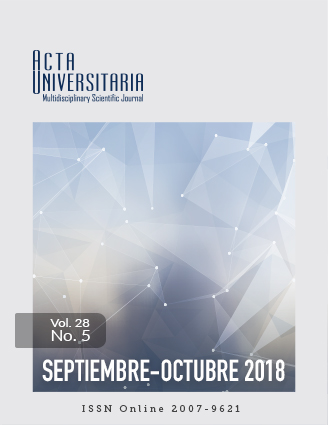Spatial distribution of egg populations of Bactericera cockerelli Sulc. in the cultivation of tomato (Physalis ixocarpa Brot.)
Published 2018-11-15
Keywords
- Geostatistics,
- Bactericera cockerelli,
- Krigeado.
- Geoestadística,
- Bactericera cockerelli,
- Krigeado.
How to Cite
Abstract
The production of husk tomatoes has suffered economic losses that go from 70% to 80% due to the presence of yellowing and floral abortion. The causal agent is attributed to the insect Bactericera cockerrelli Sulc. The control alternatives of this insect have lacked efficacy, therefore, this work aimed to determine the spatial distribution of the populations of eggs of B. cockerelli in four plots of husk tomato, by means of geo-statistics. The experimental semi-variogram for a theoretical model (spherical, exponential or Gaussian) was determined through the Variowin 2.2 programs. Its adjustment was validated with the cross-validation method and the plaque aggregation maps were obtained through the Ordinary Kriging with the Surfer 9.0 program. The results showed that the egg populations of B. cockerelli present an aggregate distribution, which was corroborated by density maps. Infestations were not present in 100% of the experimental plots, which is interesting for directing control measures on specific areas of infestation.

